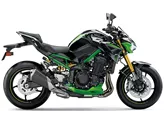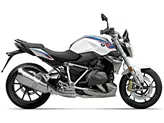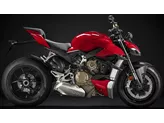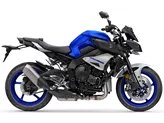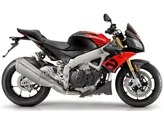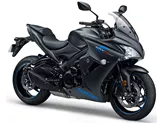BMW S 1000 R 2016 vs. Kawasaki Z1000 2013

BMW S 1000 R 2016

Kawasaki Z1000 2013
Overview - BMW S 1000 R 2016 vs Kawasaki Z1000 2013
The BMW S 1000 R 2016 and the Kawasaki Z1000 2013 are both naked bikes with similar engine types, in-line four cylinders. However, there are several differences between the two models.
In terms of engine power, the BMW S 1000 R 2016 comes out on top with 160 HP, while the Kawasaki Z1000 2013 offers 138 HP. This gives the BMW an advantage in terms of acceleration and top speed. The torque is also higher on the BMW, with 112 Nm compared to the Kawasaki's 110 Nm.
Both bikes feature upside-down telescopic forks for the front suspension, providing a smooth and controlled ride. The chassis of both bikes is made of aluminum, which offers a good balance between strength and weight. However, the BMW S 1000 R 2016 has a twin tube frame, while the Kawasaki Z1000 2013 has a double cradle frame. The twin tube frame on the BMW is known for its rigidity and stability, providing better handling and control.

BMW S 1000 R 2016
In terms of braking, both bikes have double disk brakes with four pistons at the front. The BMW S 1000 R 2016 has radial technology for its front brakes, which offers better braking performance and control. The Kawasaki Z1000 2013 also has radial technology, but it also features petal brakes, which provide better heat dissipation and improved braking performance.
Both bikes have the same front and rear tire dimensions, with a width of 120 mm and a diameter of 17 inches. The wheelbase is slightly longer on the Kawasaki Z1000 2013, measuring 1440 mm compared to the BMW's 1439 mm. The seat height is also similar, with the Kawasaki measuring 815 mm and the BMW measuring 814 mm.
In terms of fuel tank capacity, the BMW S 1000 R 2016 has a larger tank with a capacity of 17.5 liters, compared to the Kawasaki Z1000 2013's 15 liters. This gives the BMW a longer range and fewer stops for refueling.

Kawasaki Z1000 2013
In terms of strengths, the BMW S 1000 R 2016 has a powerful and well-controllable engine, a powerful braking system, and a comfortable seating position. The Kawasaki Z1000 2013, on the other hand, has a powerful engine with a rich sound and a unique design.
However, the BMW S 1000 R 2016 does have some weaknesses, including the fact that its optional extras are expensive and hard to resist. Additionally, the chassis of the BMW is known to be hard, which can result in a less comfortable ride. The Kawasaki Z1000 2013, on the other hand, lacks traction control and has a nervous chassis, which can affect stability and handling.
In conclusion, both the BMW S 1000 R 2016 and the Kawasaki Z1000 2013 are powerful naked bikes with their own strengths and weaknesses. The BMW offers a more powerful engine, better braking performance, and a comfortable seating position, while the Kawasaki has a unique design and a rich sound. Ultimately, the choice between the two will depend on the rider's preferences and priorities.
Technical Specifications BMW S 1000 R 2016 compared to Kawasaki Z1000 2013
Pros and Cons in comparison
Pros and Cons in comparison
BMW S 1000 R 2016

With the BMW S 1000 R, you notice both the close relationship to the S 1000 RR superbike and the endeavour to equip the machine with a high degree of comfort for country roads and everyday use. Accordingly, the 1000cc four-cylinder power unit is brute and yet easily controllable, and the seating position is correspondingly sporty and comfortable. The fact that the S 1000 R is one of the most affordable power naked bikes is surprising and very pleasing, although one must not get hold of the list of optional extras - because thanks to the many irresistible features, it will certainly be more expensive.
Kawasaki Z1000 2013

All in all, the new Z1000 is a successful further development of its predecessor. The lack of traction control is more of a marketing problem than a problem for end customers.
Price Comparison Avarage Market Price BMW S 1000 R vs Kawasaki Z1000
There are a few key differences between a BMW S 1000 R 2016 and a Kawasaki Z1000 2013. In terms of price, the actual average price of a BMW S 1000 R 2016 is about 38% higher. A BMW S 1000 R 2016 experiences a loss of 390 GBP in one year and 1,960 GBP in two years of ownership. This is offset by a loss of 740 GBP and 740 GBP for a Kawasaki Z1000 2013. Compared to Kawasaki Z1000 2013 there are more BMW S 1000 R 2016 bikes available on the 1000PS.de Marketplace, specifically 10 compared to 4. With 69 days it takes the same amount of time to sell a BMW S 1000 R or a Kawasaki Z1000. Since model year 2014 1000PS.de editors have written 62 reviews for the BMW S 1000 R and 41 reviews for the Kawasaki Z1000 since model year 2005. The first review for the BMW S 1000 R was published on 03/11/2013 and now has more than 17,300 views. This compares to more than 5,800 views for the first review on Kawasaki Z1000 published on 02/09/2002.








